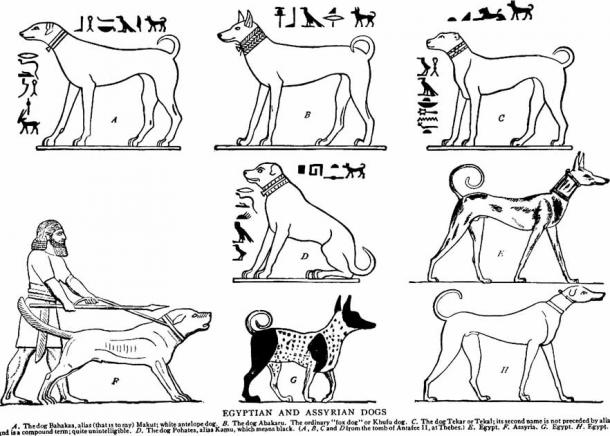Child Buried With 142 Dogs in Ancient Egyptian Necropolis
Archaeologists have unearthed the remains of 142 non-ritually buried dogs, covered in blue powder, in an elite Egyptian tomb. It is believed they were drowned in a reservoir flood.
Designated a UNESCO World Heritage Site in 1979, the Faiyum Oasis necropolis contains a group of ancient Egyptian tombs located approximately 62 miles (100 kilometers) southwest of Cairo. The tombs feature well-preserved paintings and inscriptions from the Middle Kingdom (2040-1782 BCE) through the Ptolemaic Period (305-30 BCE), illustrating the day-to-day activities of ancient Egypt.

An article by Heritage Daily explains that archaeologists from CEI RAS have been excavating 4th century BC to 7th century AD burials at Faiyum for several years.
In 2021, an international team of archaeologists uncovered a large tomb dating back to the New Kingdom period (1550-1070 BC) that contained the remains of “142 dogs,” buried alongside the tomb’s owner, who is believed to have been an elite 8 or 9 year old girl.
Four Legged Family Members, Or Working Dogs?
The discovery of the 142 dogs’ remains offers newfound insights into ancient Egyptians’ relationship with canines, both as pets and working dogs, which is an important aspect of their culture that is not well understood.
The researchers said the dogs were “ carefully buried ,” with many of them lying on their sides, facing the tomb’s human inhabitant. According to an article in Greek Reporter , this suggests the dogs were highly valued and possibly even considered members of the family.
Different dog breeds were identified in the tomb, with some of the races resembling modern-day breeds, such as greyhounds and salukis, while others were wild pariah dogs.
This discovery indicates that Egyptians bred dogs for specific jobs, like hunting, herding, and companionship. To learn more about their breeds and origins, the archaeologists are now planning a study of the 142 dogs’ DNA.

They All Died Together, But Not By A Human Hand
In ancient cultures, it was not uncommon for animals to be buried alongside their owners, which were often regarded as companions and served as status symbols. In ancient Egypt, dogs were highly valued and were sometimes mummified and buried with their owners in tombs or cemeteries. But not in this case.
This discovery of 142 dog remains is significant, in that it has the potential to provide new insights into the culture and society of ancient Egypt, and how they interacted with animals. Zoologist Galina Belov , from the Centre for Egyptological Studies of the Russian Academy of Sciences, Egyptology Department, examined the dogs and found that they all died at the same time, with “no evidence of violence”.

Accidental Death by Drowning?
At Dayr al-Barsha, a Coptic village in Middle Egypt, the remains found in shafts and burial chambers included dogs, foxes, eagle owls, bats, rodents, and snakes.
However, these animals were not ritually buried, but rather trapped in the shafts by accident. And it would seem that an accident was also the cause of death of the 142 dogs discovered last year.
According to a report on News AM , the researchers identified traces of “blue clay” over the dog’s remains, which are thought to have come from an ancient Egyptian reservoir.
This discovery suggested the dogs had been involved with a flooded water source in which they might have drowned. In conclusion, it is thought that maybe the child had been caring for the animals, but an even bigger mystery surrounds “the linen bag” found on the girl’s head!
Linen Indicated High-Status in Ancient Egypt
A similar linen bag was found on another head at the same necropolis, but on an executed man with an arrow in his chest. By 3600 BC, Egyptians had begun to mummify the dead by wrapping them in linen bandages or strips with plant extracted embalming oils, and the linen was adhered to the body using gum, as opposed to a glue.
Linen dressings provided the body physical protection from the elements, and depending on how wealthy the deceased’s family was, the departed could be dressed with an ornamental funeral mask and shroud.
However, in this case, the deceased girl with the linen bag on her head was laid amongst almost 150 dogs, which while not being gold, also indicated elite status, as someone had to pay for the feed and upkeep of all these animals.

